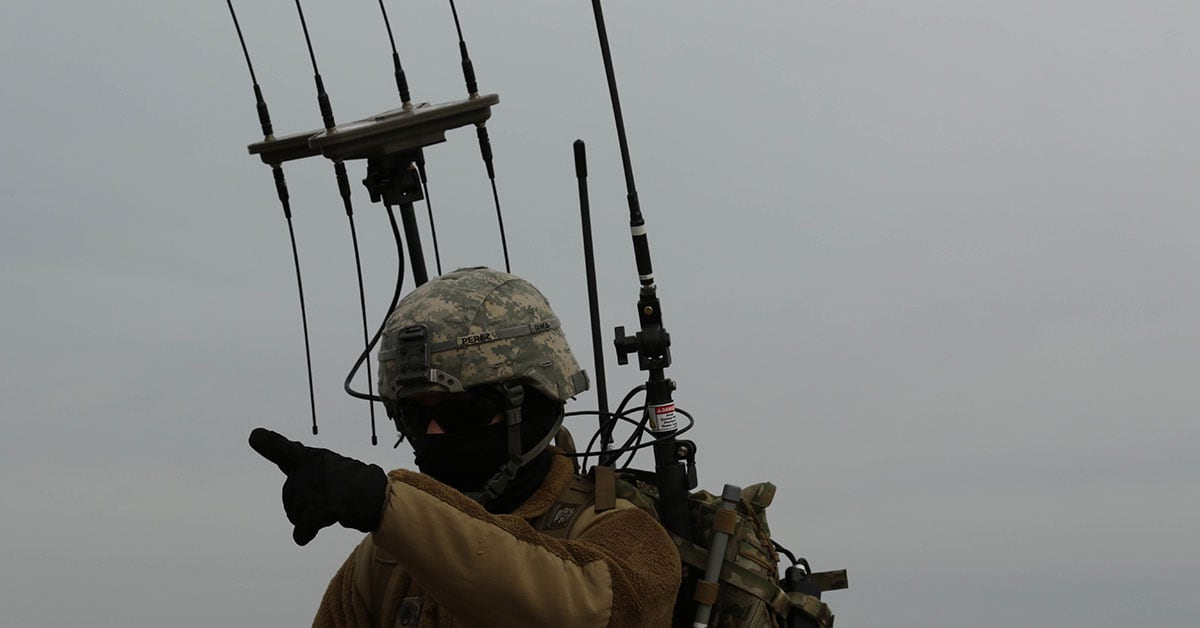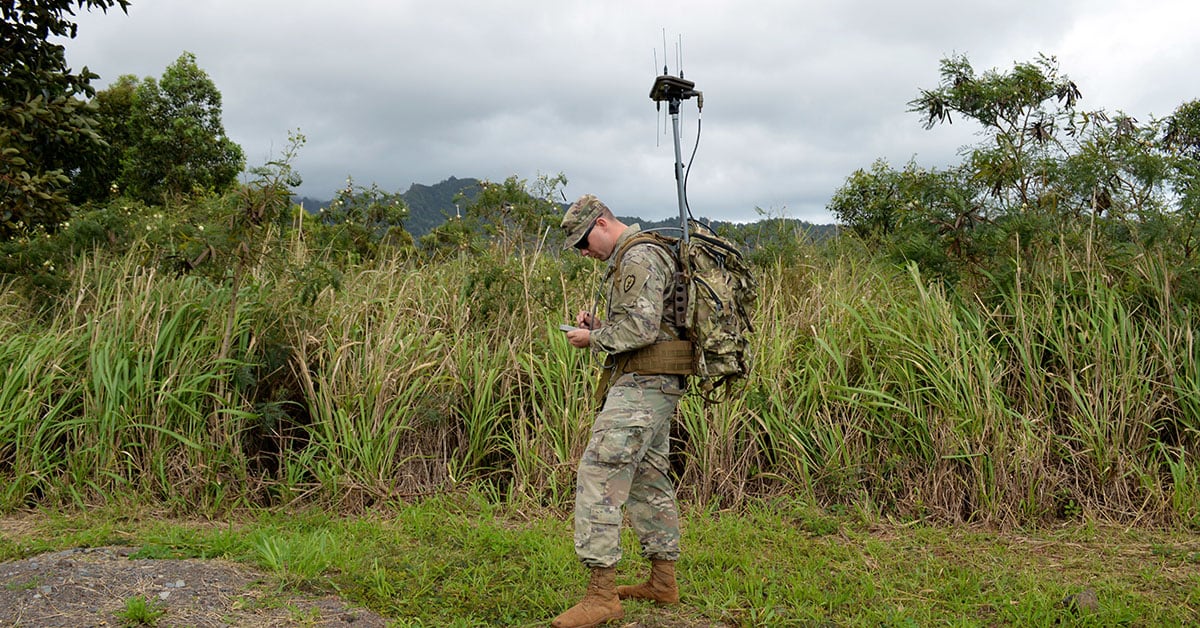The Army — looking to get away from sometimes-antiquated acquisition processes — is using existing events to better inform new electronic warfare programs and systems.
The Terrestrial Layer System is an integrated EW and signals intelligence system that will provide a much-needed jamming capability to formations. Assessments, exercises and even deployments of quick-reaction capabilities are informing how the service will move forward on prototyping and providing much-needed capabilities such as this one to units.
The Army has directed the requisite capabilities offices to execute experimentation and demonstration of integrated SIGINT/EW/cyber at the brigade level to inform TLS requirements, Col. Jennifer McAfee, director of the Training and Doctrine Command’s capabilities manager for terrestrial and identity at the Intelligence Center of Excellence, told C4ISRNET in a November interview.
RELATED

The experimentation, McAfee said, will include a variety of quick-reaction ground and dismounted capabilities currently being provided to forces in Europe and at home station. Overall, she said, the effort is three-fold.
The Army is going to validate how it thinks the force should be organized and integrated, working to get the right tactics and procedures.
The Army will also leverage several events — such as combat-training center rotations, the Joint Warfighter Assessment and the Joint Operational Integration Assessment — to give soldiers capabilities and assess how they’re used.
Upon providing forces capabilities during these events, the assessors will be looking to see what tactics and techniques soldiers use, Col. Mark Dotson, director of the Training and Doctrine Command’s capabilities manager for electronic warfare at the Cyber Center of Excellence, said when interviewed alongside McAfee.
“We’re also going to look at some units that haven’t yet integrated equipment so that we can see how they do at some of the training centers and what some of their challenges are,” he added.
“When I say we’re going to take a look at these units … we don’t want to push a whole bunch of observers on them that just kind of smother the unit, but we do want to learn about how … training is going to work, how materiel is working so we can really get the right answers as we go forward with developing capability requirements, not just materiel requirements for the Army.”
Lastly, McAfee said the Army will be preparing an acquisition strategy fully approving requirements by the end of next summer.
Dotson said industry has not been fully briefed on these opportunities yet, but that’s forthcoming.
He said he anticipates a briefing to industry in the second quarter of fiscal 2019 to tell them what the Army is doing so they can understand their insertion points.
RELATED

Taken together, the Army will be examining how soldiers have used the quick-reaction capabilities and how they view some prototypes that industry might bring to bear after they’ve been briefed, using that as a means of doing risk reduction to the program and better informing requirements.
McAfee said this is not the traditional acquisition path.
“We hope to go faster, but with the authorities granted by Congress ... we think this rapid prototyping using the buy, try, decide method is going to be great for this rapid acquisition process,” she said. “Are we going to field this next week? Not necessarily, but we’re talking fielding to the force in the next two to three years, not seven to 10 years.”
Mark Pomerleau is a reporter for C4ISRNET, covering information warfare and cyberspace.








